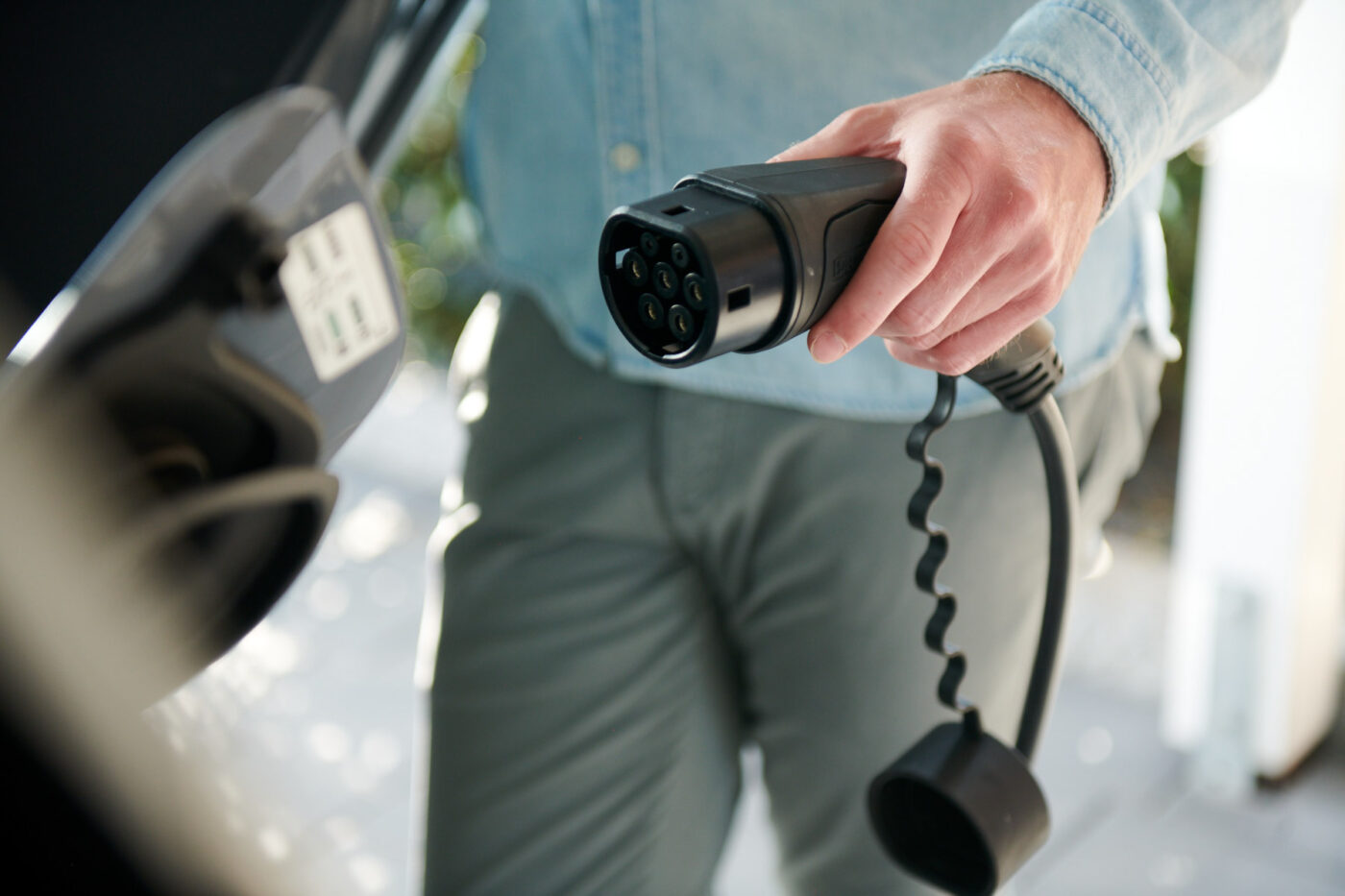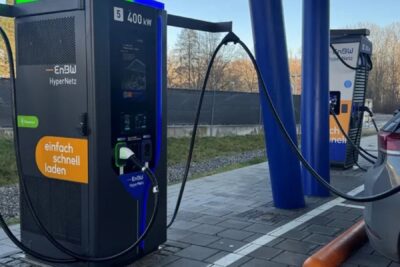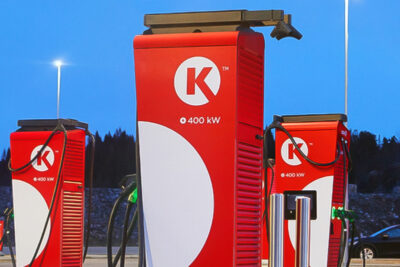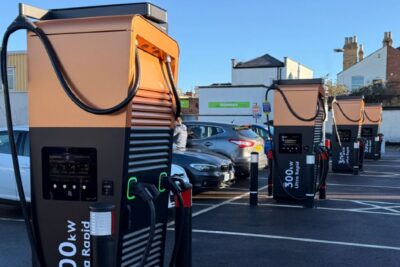
How will customers benefit from bidirectional charging – five questions for Michael Rahi from E.ON Group Innovation
According to E.ON, EV drivers in Germany can save up to €900 Euros per year when they use bidirectional charging. It’s a thesis that the company went on to test with its pilot project Bi-clEVer, which started at the end of 2024. The savings are a result of a combination of vehicle-to-home (energy from the vehicle battery is used at home) and vehicle-to-grid (energy from the vehicle battery is fed into the power grid).
For those with their own solar power, a bidirectional setup can save as much as €420 Euros per year. That is, of course, if the customer maximises his or her own solar power consumption and takes advantage of dynamic electricity tariffs.
However, to introduce bidirectional charging on a broader scale (in Germany and abroad), there are still some hurdles that have to be overcome. Yet, we seem to be on the right track, says Michael Rahi from E.ON Group Innovation.
Mr. Rahi, how do you assess the potential of bidirectional charging to stabilise the power grid?
I am convinced that electric vehicles will increasingly become key building blocks of the overall energy system – and the potential of bidirectional charging to support grid stability is significant. To better integrate renewable energy sources and enable market, grid, and system services within the energy system, we must create market access for both micro-flexibilities like EVs and entire households. Bidirectional charging can contribute through a range of use cases – for example, peak shaving. Energy supply and demand fluctuations, which are rising due to the growing share of volatile energy sources like solar and wind, can be mitigated by using vehicle batteries as mobile storage units – helping to avoid peak loads.
The concepts for bidirectional charging are already well advanced and have been largely validated in pilot projects. To now bring them into widespread application, we at E.ON Group Innovation have joined the BDL Next consortium project. Together with partners such as BMW, Bayernwerk, Compleo, TenneT, KEO, EBZ, FfE, KIT and the University of Passau, we are field-testing V2G – the return of electricity from the car battery into the grid. This allows us to lay the groundwork for commercial implementation.
It’s important to us to foster awareness and understanding of bidirectional charging among customers and, for instance, to demonstrate the potential revenue opportunities. That’s why we’ve focused this project on a market-oriented use case: intraday trading. Equally important, however, is ensuring grid compatibility – we don’t want to burden the grid with V2G, but rather relieve it. Within the consortium, we’re working on specific use cases that ensure exactly that, such as the ‘envelope curve’ approach and Redispatch 3.0, to embed grid-friendliness in our system architecture from the outset.Regardless of the practical hurdles, a commercially viable V2G rollout is currently difficult due to regulatory constraints and the tax treatment of mobile storage. We are thus working with numerous stakeholders from the energy, automotive and charging sectors within the ‘Coalition of the Willing on Bidirectional Charging’ to develop a cross-industry solution.
How can bidirectional charging be integrated into existing energy management systems to create a win-win scenario for consumers and grid operators?
Thanks to §14a EnWG, customers in Germany can benefit from significantly reduced grid charges if they use controllable devices like heat pumps or wallboxes. It’s in the interest of both DNOs and end users to ensure that any power reduction for these devices only occurs in absolute emergencies, and that planned optimisation can proceed without constraint. With bidirectional charging, we can offer flexibility to proactively avoid grid bottlenecks – meaning throttling can ideally be avoided altogether, while customers still enjoy lower grid tariffs. That’s a clear win-win for all involved.
Can you share some best practices from the Bi-clEVer pilot project – what’s already working?
With Bi-clEVer, we demonstrated proof of concept for the V2H use case of PV self-consumption optimisation with pilot customers. Instead of feeding excess solar power into the grid, it’s stored in the car battery for later household use. This reduces reliance on grid electricity – giving end users a tangible cost benefit. Our pilot customers were able to double their energy autonomy and save up to €420 per year on electricity bills. We implemented this technically with the Home Energy Management System from gridX, which manages power flows via a specially developed algorithm.
As for Vehicle2Grid, we’re still in the development phase. In Bi-clEVer, we used a digital twin of pilot households – developed by EBZ Business School – to simulate the revenue potential of the intraday trading use case. In BDL Next, we plan to trial the V2G use case in real-world conditions, to lay the foundation for a future customer product.
What are the remaining challenges in the pilot project?
In Bi-clEVer, we worked with prototype hardware – a Kostal wallbox and a pre-production BMW vehicle. These were proprietary systems rather than market-ready products. Looking ahead to commercialisation, the key is developing interoperable and cost-effective solutions – which is a major challenge, as relevant communication standards are not yet widely implemented. That said, we’re seeing positive movement, such as the recent recommendation by the German Federal Network Agency to adopt VDE FNN’s endorsement of EEBus as a minimum standard for grid-based control.
Some bidirectional-capable hardware is already available, but prices remain high. We’re also seeing efficiency challenges during low-power charging, which is common in V2H scenarios – there’s definitely room for improvement here.
What’s more likely to win the race – AC or DC bidirectional charging? And where should additional hardware be located – in the vehicle or the wallbox?
Those two questions go hand in hand. With a DC wallbox, the additional hardware sits in the wallbox; with an AC wallbox, it’s inside the EV. Our current projects focus on DC, but we are seeing growing interest in AC solutions – largely due to cost pressure. A bidirectional DC wallbox typically costs in the four-digit range, whereas AC options are significantly cheaper.
Ultimately, the answer also depends on the carmakers, whose development cycles are long. While Asian manufacturers are increasingly backing AC, most European OEMs have focused on DC. We’re closely monitoring the market. Both technologies have their advantages and disadvantages – and both have a role to play. At E.ON, we want to offer our customers the best solution for their individual set-up. As mentioned earlier, our focus is on interoperability, so customers are free to choose whichever wallbox they want to use with E.ON’s HEMS.





0 Comments